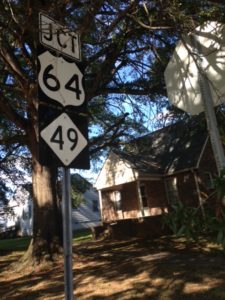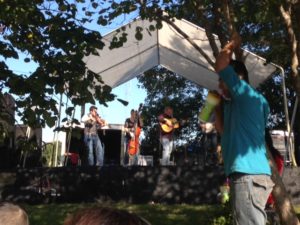Introduction
Dessert Journey: An Ambassador’s Experience is a recently published book (Punto Rojo Libros, 2015) that, by recounting the experiences of a Spanish Ambassador in times of war, sheds a particularly piercing light over the inner workings of what the author and first-person narrator calls the ‘Diplomatic Carrier’. Arbolí’s intention with it was not, however, to write a history book. But to, as he points out himself in the 276 page book’s prologue, share unknown facts and details about Iraq’s invation of Kuwait and the subsequent Gulf War 1990-1991 which may be “culturally enriching to the public” (p.11)
Loving research and having never before read a travel writing book, I wanted to find something that would give me a detached –yet personal enough– perspective of a specific place. Wanted to get to know my chosen destination’s background in detail. To learn about something well enough to gain true cultural knowledge, while getting a decent amount of entertainment. So, to learn about a nation located in Eastern Arabia through the eyes of a man moving heaven and earth to fulfill his duty to two countries simultaneously seemed to fit the bill quite nicely. Amazon.com ($23) promised a good read.
Synopsis
Juan José Arbolí Desvalls, Ambassador of Spain in the Emirate of Kuwait, left his post on early July 1990 for Spain to undergo surgery the 19th of said month. A few weeks later, August 2nd, news reach him that Iraq has invaded Kuwait and that the nation’s airport has been bombarded. Still convalescent, he calls Spain’s Ministry of Foreign Affairs and receives his orders: “Get as close to the Embassy as you can” (p.26).
By the time our narrator arrives at the frontier, in company of the Canada’s Ambassador in Kuwait and two staff members of Spain’s Embassy in Riad; Capital of Saudi Arabia, the highway had been blocked both by armed soldiers and a tank. No one can pass through. A situation which did not change during any of the three times the entire group drove to (and from) the frontier in hopes of being allowed in[1]. Full-scale war erupted a few days after he was called back.
The entire voyage[2], comprised in the book’s first four chapters, lasted nine days from start to finish: August 4-12. All remaining chapters (eight, plus an epilogue and anex) contain relevant, and very detailed background information.
Review & Reflection
I chose this book because I wanted something honest. Something that would entertain me without having to sacrifice too much of its grip on reality in exchange for florid language and marketable half-truths. In short, I wanted a down-to-earth narration. And that’s exactly what I got.
The only problem was that there was too much of it in-between lines. Too much human truth, I mean. Stemmed from evidence pointing to the fact that Spain’s Ministry of Foreign Affair’s fear of the media[3], appears to have had considerable weight in the decisions taken during the first days subsequent to Saddam Hussein’s Invasion of Kuwait. More even than the well-being of the Embassy, the hostages it hosted[4], its Staff and the Ambassador himself. Conflict in Kuwait was, after all, the most important news item in the world from August 2, 1990 to February 28, 1991. Seven whole months, practically a record.
According to our narrator, the Ambassador of Spain in Kuwait himself, relationships between Kuwait and Iraq had been tense for some time. Ever since the beginning of the war between Iraq and Iran (1980-1988). Not only because Kuwait’s access to the Persian Gulf through the Shatt Al-Arab strait had geostrategic importance for Irak, but because Kuwait was unapologetically[5] rich. Invading their neighbors was, for Iraq, the key to gain everything they needed. A way to re-ignite its fully equipped army’s morale[6], and a resource to pay off the previous war’s debt. Yet, the kuwaiti people did not pay attention to the warning signs.
Far from it. Iraq’s frequent military skirmishes in the frontier[7] did nothing to convince Kawait of the need to ratify the frontier line loosely proposed by Great Britain[8] and last spoken of in 1984. Fights became “the usual”, and when Saddam Hussein’s army finally struck the truth is that no one expected it. Not the nation’s government, not the civilians and certainly not representatives of foreign nations such as Arbolí. The man was not at his Embassy because he, thinking that nothing was amiss, had formally requested leave to have surgery and had left his post (manned by his Secretary) just a month before the conflict started. Spain’s government feared media wouldn’t see it that way, though. Not with what had happened in Cuba a few years back.
It mattered little that the successful kidnapping of three cubans seeking refuge in the Embassy of Spain (La Habana) by socialists had happened while the Ambassador had been out on his reglamentary, yearly vacation. All the media saw then was a system failure. Hence, when Kuwait was invaded and it turned out the Ambassador was not there, the governments first though was get him back there as soon as possible. Arbolí (given his old-school sense of duty) was already moving by the time he was called, nevertheless. But I didn’t like the government’s prioritizing of public opinion over their own (and still convalescent) Ambassador’s health. Even if his failed attempts to reach his Embassy did manage to calm the media[9] somewhat.
I thought about it a lot as I read. How, even in times of war, people’s priorities seem to be backwards. When did a favorable comment from CNN gain more value than a human life? The question itself is present throughout the whole book like a hidden theme. Almost as if the whole point of the narrative was – more than to recount his experiences – to highlight this as a fact. An issue of major concern. Especially since, as he points out, news lose relevance quickly. They disappear. Like a mere “information balloon blown [out of proportion] by the media” (13p.), even though there’s nothing further from the truth. And then all that remains are the consequences.
How many bad choices have people made simply to stay in the media’s good graces? How many lives lost? Do governments control the media, or does media control the government? , and finally, the mother of all questions. What is the truth? At risk of sounding like a conspiracy theorist, I’m going to put my thoughts out and say this: I don’t think anyone knows anymore. Not with how malleable it is. At best there must be many truths, or one truth with many variants. And those who know more about those variants are those with whom we communicate less: The diplomats. The politicians. Those closest to the source.
Since this book is still fairly new, no one seems to have posted a full-fledged review yet. When interviewing Arbolí on the subject of Kuwait, however, articles do consistently draw on his remarks to start broader discussions. Particularly his comment on how “Spain makes poor use of its diplomatic[10] potential”. Which goes hand-in-hand with what I’ve expressed above[11]. “Diplomats often possess fantastic information and no one takes advantage of it” said Arbolí to a reporter in February 2016 – “They are very capable people and their potential is often wasted”.
References
Arbolí Desvalls, Juan José. “Dessert Journey: An Ambassador’s Experience” Published by Punto Rojo Libros. 2015. Print
Merino, Olga. “Juan José Arbolí: ‘España desaprovecha su potencial diplomático’” Published by El Periódico: Internacional. 2016. Web.
[1] 500 meters, 122F under shade (one way).
Note: There are 1.000 km between Riad and the Saidi Arabia / Kuwait Frontier.
[2] Timeline:
Agust 4: Flight, Barcelona (Spain) -Frankfurt (Germany) – Riad (Capital, Saudi Arabia).
August 4/5: Car, Riad – Jubail (Industrial city, Saudi Arabia).
August 5: Car, Ras Al-Jafji (town, Saudi Arabia) – Saidi Arabia / Kuwait Frontier (entry attempt 1).
Saidi Arabia / Kuwait Frontier – Ras Al-Jafji.
Ras Al-Jafji – Saidi Arabia / Kuwait Frontier (entry attempt 2).
Saidi Arabia / Kuwait Frontier – Ras Al-Jafji – Jubail.
August 6: Car, Jubail – Ras Al-Jafji – Saidi Arabia / Kuwait Frontier (entry attempt 3).
Saidi Arabia / Kuwait Frontier – Ras Al-Jafji – Jubail
August 6/7: Car, Jubail – Riad
August 7, 8,9 10: Riad
Agust 10/11: Flight, Riad – Zurich (Switzerland) – Barcelona.
Agust 11/12: Flight, Barcelona – Madrid (Spain).
[3] And their influence on public opinion thanks to television (global coverage)
[4] Six in total. Gathered there by Iraq’s troops.
[5] Kuwait’s oil industry (100.000 thousand barrels, same as Iraq) generated an immense amount of money. Ostentatious displays of wealth and copious investments in foreign soil were particularly common during the nation’s Golden Age.
[6] 1.000.000 men
[7] Prior to the invation.
[8] First in 1913, then in 1920.
[9] CNN tracked and transmitted Arbolí’s every move.
[10] Meaning its diplomats’potential.
[11] Appicable to any government around the globe.









